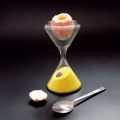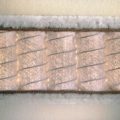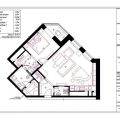Photo Mads Mogensen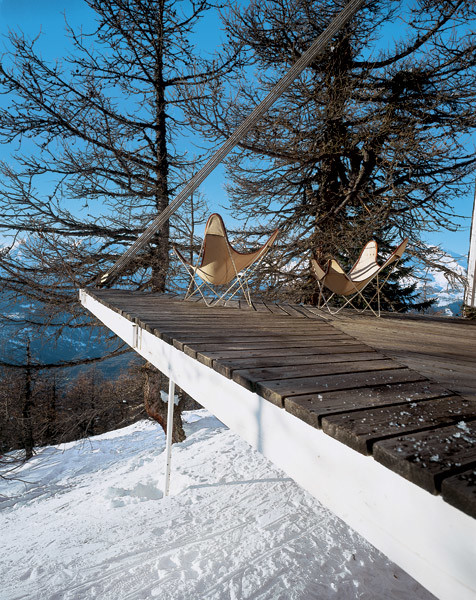 Country house interior photo
Country house interior photo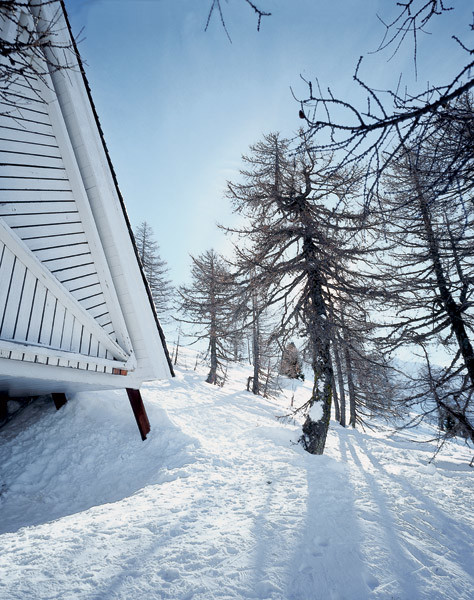
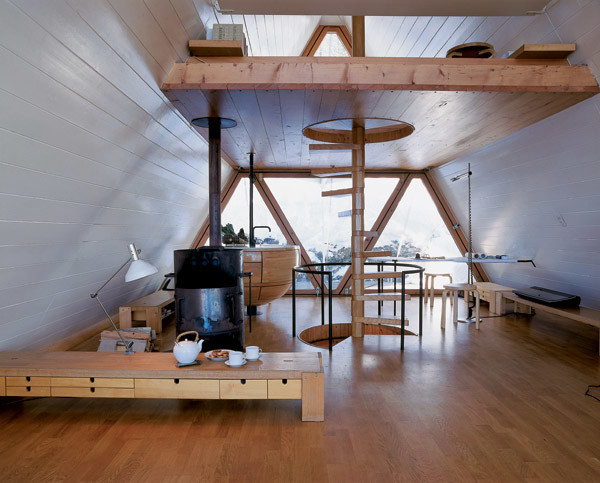
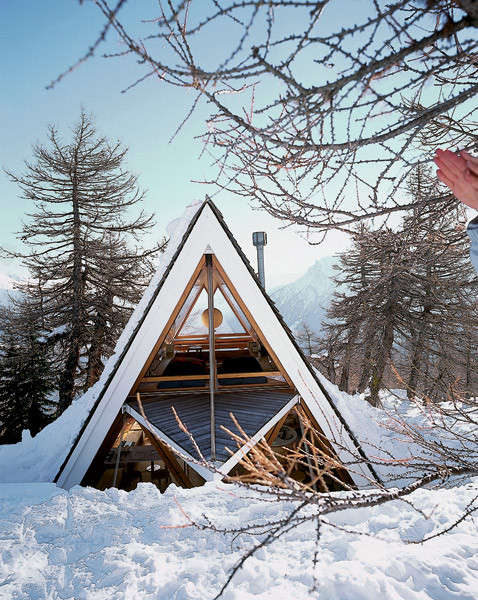 In an effort to escape the conventions of the cityHeidi and Peter Wenger have reached great heights in their lives – their country house is located in the Alps, rising two thousand meters above sea level. The ringing mountain air, rocky ledges, here and there overgrown with trees, and not a single living soul around – is it possible to imagine a better place for a romantic getaway? However, in this union of two hearts there was also a place for a third participant – modern architecture. Heidi and Peter are engaged in the development of modular wooden structures and, having started building their own home, they simply could not do without experiments: “We wanted the house to be at one with nature, experiencing the changing seasons with it.” The Wengers are not the first to conceive of merging architecture with the landscape. The main solutions to this problem are well known: biomorphism, an abundance of windows (to let nature into the house), the use of environmentally friendly materials and reliance on local architectural traditions. The peculiarity of this project is that it involved all four methods at once. The prototype of the dwelling was the spruce trees that surrounded the site chosen for construction. Their crowns suggested the ideal shape of the house - an isosceles triangle. This figure is light and graceful. But, alas, beauty is not always practical: triangular structures lack rigidity. They are often used for various types of temporary housing (tourist tents, wigwams, etc.), but are not considered entirely suitable for the construction of more substantial dwellings. So the main task was to make the building, reminiscent of a fragile hut, durable and frost-resistant. For this purpose, three levels of protection were provided.
In an effort to escape the conventions of the cityHeidi and Peter Wenger have reached great heights in their lives – their country house is located in the Alps, rising two thousand meters above sea level. The ringing mountain air, rocky ledges, here and there overgrown with trees, and not a single living soul around – is it possible to imagine a better place for a romantic getaway? However, in this union of two hearts there was also a place for a third participant – modern architecture. Heidi and Peter are engaged in the development of modular wooden structures and, having started building their own home, they simply could not do without experiments: “We wanted the house to be at one with nature, experiencing the changing seasons with it.” The Wengers are not the first to conceive of merging architecture with the landscape. The main solutions to this problem are well known: biomorphism, an abundance of windows (to let nature into the house), the use of environmentally friendly materials and reliance on local architectural traditions. The peculiarity of this project is that it involved all four methods at once. The prototype of the dwelling was the spruce trees that surrounded the site chosen for construction. Their crowns suggested the ideal shape of the house - an isosceles triangle. This figure is light and graceful. But, alas, beauty is not always practical: triangular structures lack rigidity. They are often used for various types of temporary housing (tourist tents, wigwams, etc.), but are not considered entirely suitable for the construction of more substantial dwellings. So the main task was to make the building, reminiscent of a fragile hut, durable and frost-resistant. For this purpose, three levels of protection were provided.
Level One: Get Off the Ground
The house rests on five wooden"goats", installed parallel to each other. They, in turn, rest on a stone plinth fixed in the ground. This "elevated" structure conveys the dynamics of the rocky terrain, visually lightens the building (it seems to float in the air), makes it more stable and contributes to thermal insulation. The entrance to the house is raised above ground level, so even after the heaviest snowfalls, the door does not have to be dug out from under the snowdrifts.
Level two: the sandwich law
In full accordance with the architecturalIn keeping with the traditions of this mountainous region, the roof of the cottage is covered with spruce shingles. This creates the impression that we are looking at a very ordinary country house, deeply sunken in the snow. In fact, the roof covers the house from head to toe, which makes the inside of the building resemble a large attic. The only difference is that there are no "dead zones" here, thanks to the steep slopes, the interior space is used entirely. And a thick layer of heat-insulating sandwich panels, laid on the inside of the roof, makes the house suitable for living all year round.
Level Three: Raise the Sails
The building's facades face east and west andare huge windows with triangular sashes. The house can be seen through and through, and the picturesque Rhone Valley becomes part of the interior. The problem is that glass does not retain heat well, of which there is little in the house anyway - it is warmed only by a potbelly stove. But the Hungarians came up with a clever trick: the windows can be closed with triangular wooden shutters, which do not leave the piercing winter winds the slightest chance. In good weather, the shutters do not stand idle either - with the help of a system of ropes and pulleys* they are folded back onto supports installed under the windows, turning into terraces. Heidi and Peter spied this idea from sailors - sails on yachts are lowered and raised in a similar way.
To be continued
The unusual appearance of the cottage was reflected in itsinterior. "Traditional furniture would have turned the house into an attic closet with an improved layout," says Peter. The standard rectangular kitchen threatened to block the room from the side, and this did not suit the Vengers: they abandoned zoning in order to make the house more spacious. As a result, Peter himself designed a compact ball-shaped kitchen and other household items. There is little furniture in the house, and no decorations at all. This is also a conscious choice of the owners: "When nature knocks on the door in all its splendor, it is foolish to embellish reality with decorative means."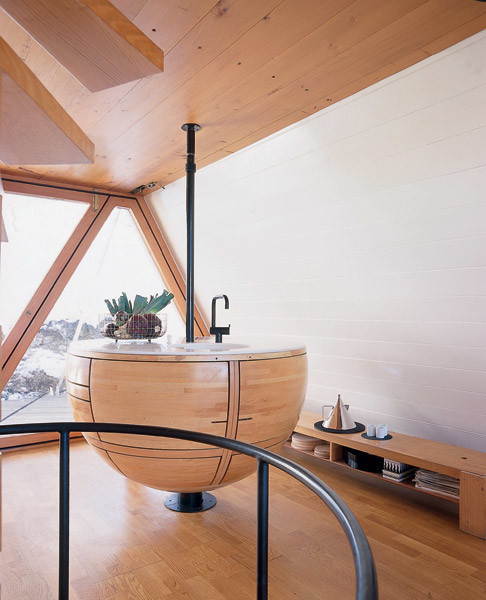
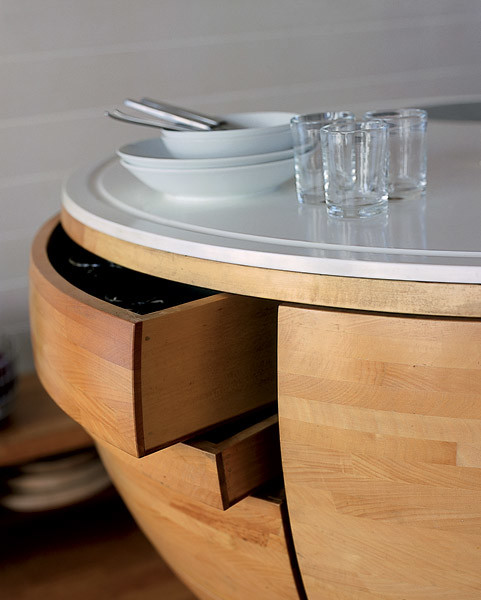
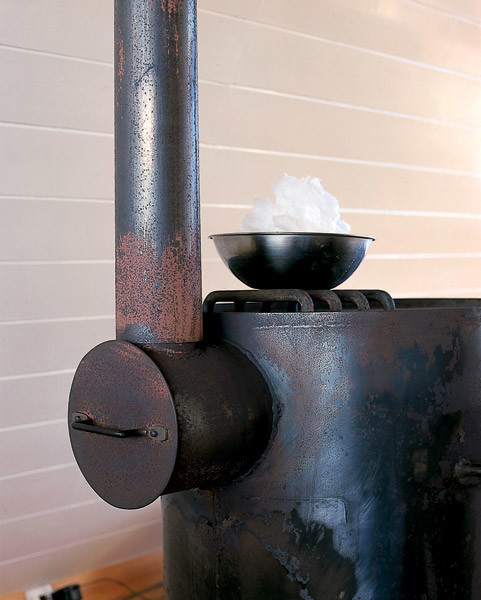
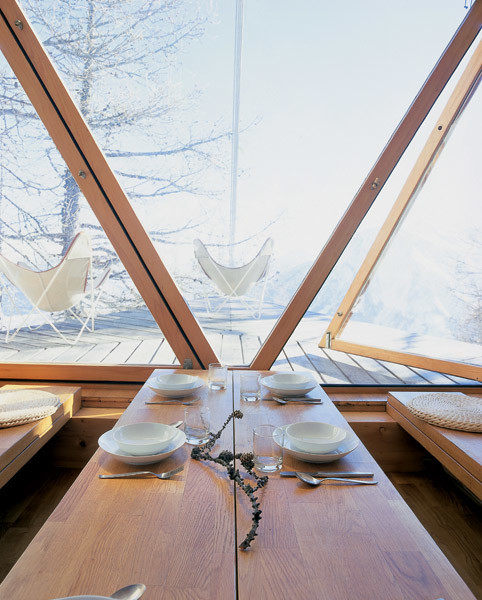 Hungarians treat their home with the utmost carebeloved child. And they even gave him a name: "Le Trigon" - "Triangle". By the way, this geometric figure symbolizes determination and high ideals. So this is the very case when the form fully corresponds to the content.
Hungarians treat their home with the utmost carebeloved child. And they even gave him a name: "Le Trigon" - "Triangle". By the way, this geometric figure symbolizes determination and high ideals. So this is the very case when the form fully corresponds to the content.




